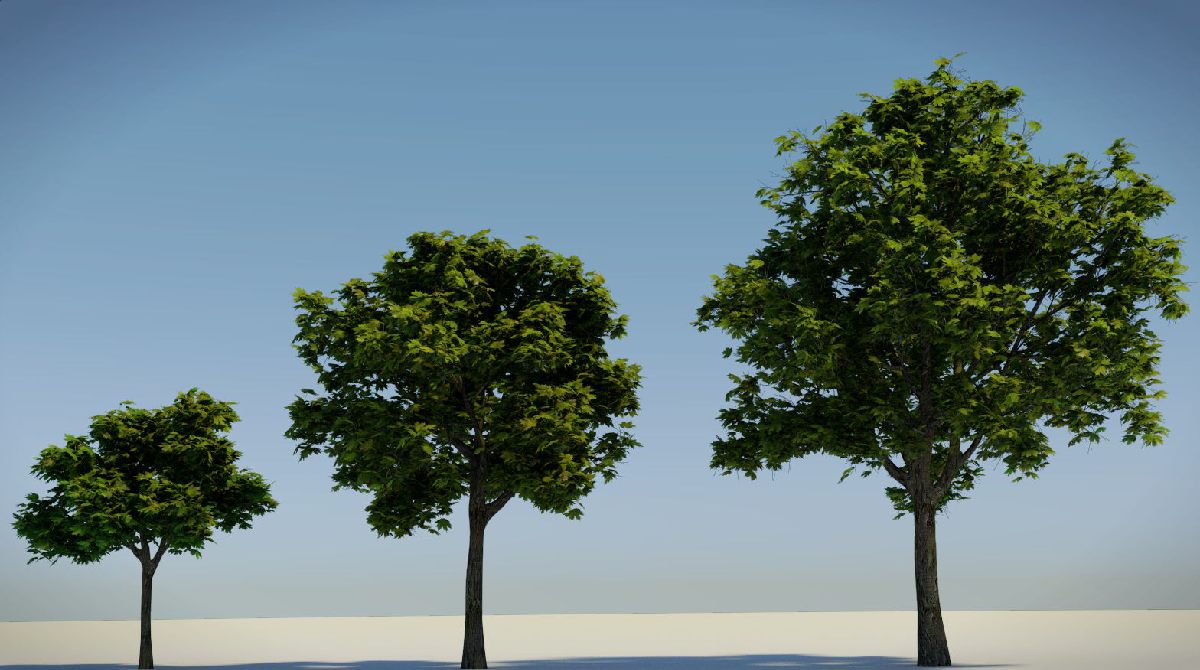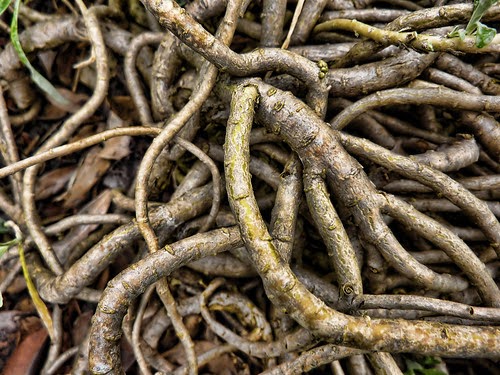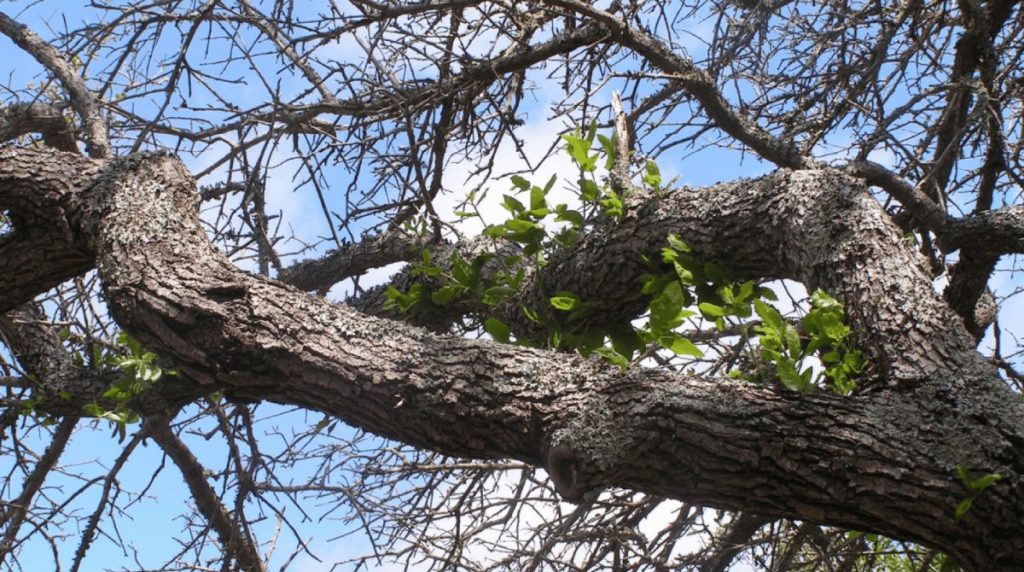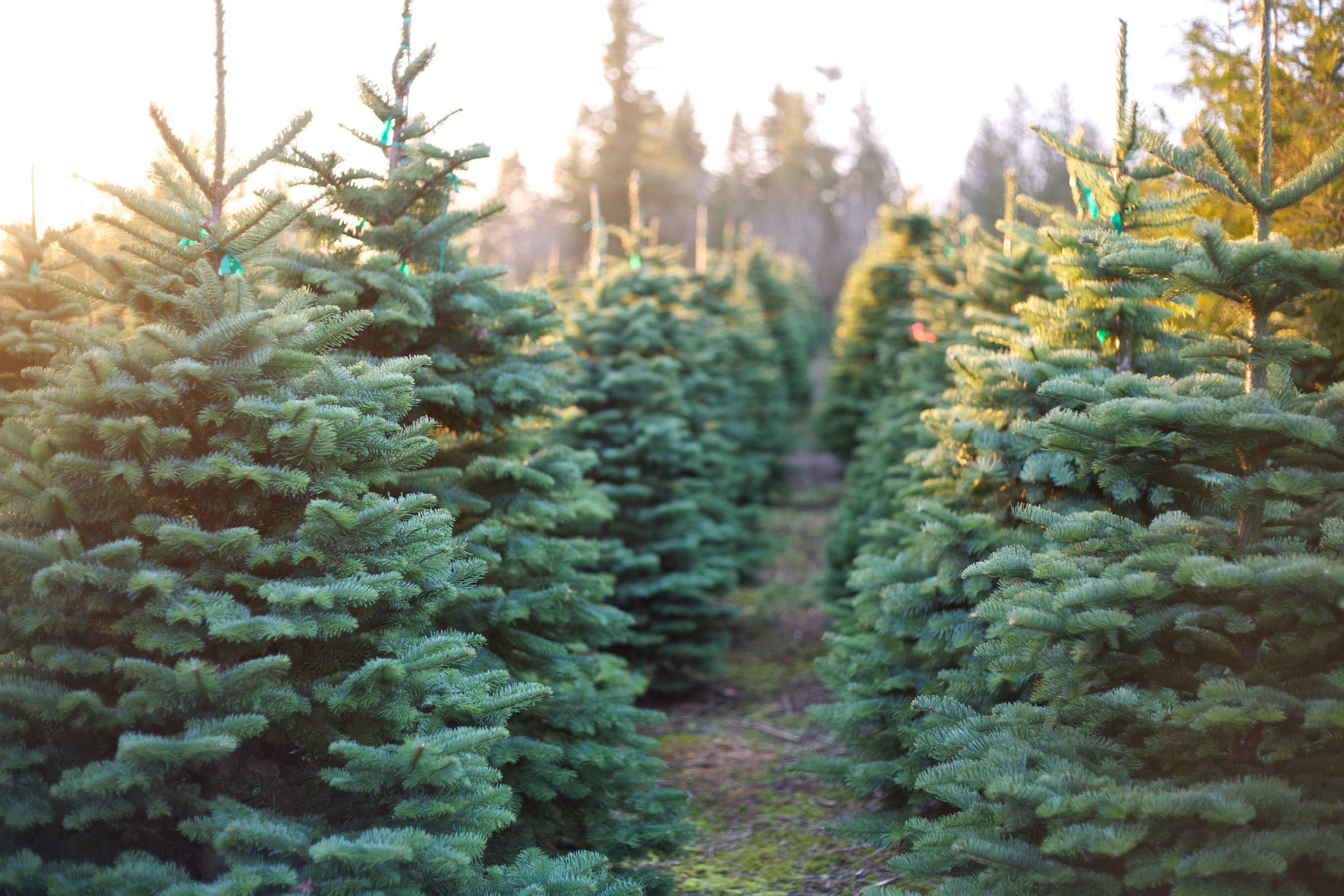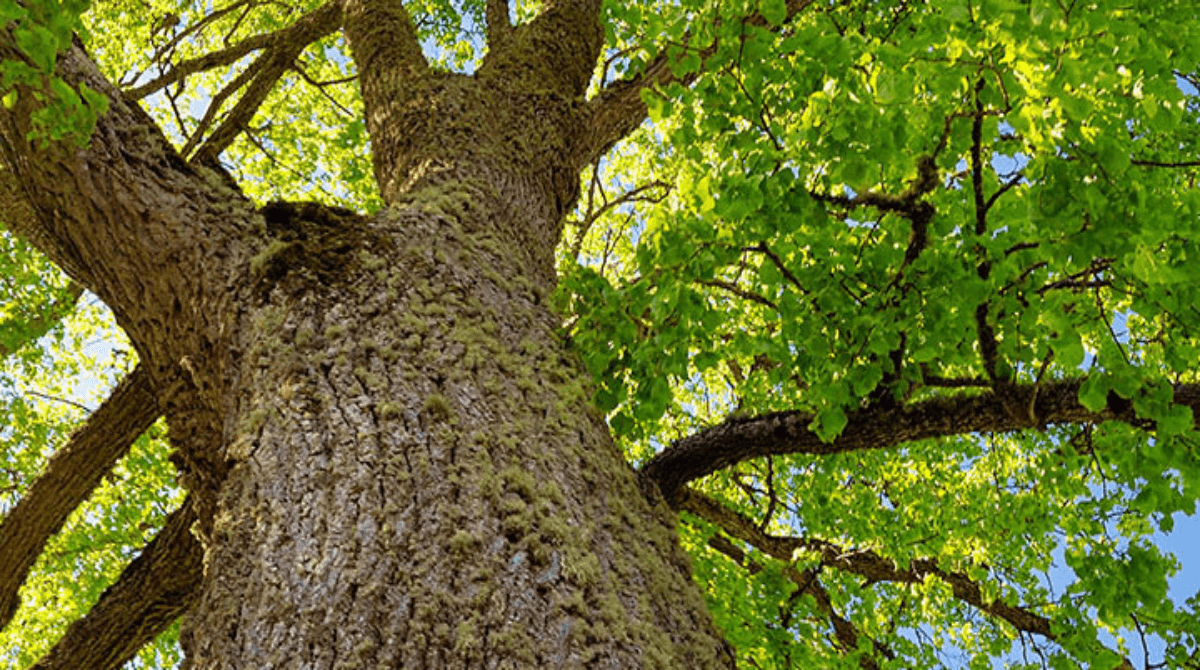
TreeNewal’s Top 10 List: Insect and Disease Management in North Texas
Date July 06, 2021
Category
Our trees and shrubs are truly an amazing part of our landscape that offers us many wonderful benefits. They give us beauty and shade, boost our mental and emotional health, and offer a long list of environmental benefits. In exchange, we’re responsible for doing our part to monitor and maintain their health. Two of the most deadly things for our trees are attacks by pests or diseases. It can be overwhelming to know what to look for when assessing your trees for signs of trouble, so we’ve come up with a list of the most common pests and diseases in Dallas-Fort Worth to help with your tree disease and pest management. If you see any of these signs or symptoms in your trees or shrubs, you should call a tree doctor immediately. TreeNewal’s ISA Certified Arborists are available to assess your trees, identify any problems, and determine a tree care plan to bring your beloved trees and shrubs back to their optimal health.
Top ten most common tree pests in North Texas
Aphids: If your trees or shrubs are infested with aphids, the first thing you’ll most likely notice is a large number of the aphids themselves attacking the trees and branches. They’ll vary in size and color, depending on the type, but they all have to suck mouthparts that they use to suck plant juices out of the leaves and stems. They excrete large amounts of a sweet, sticky liquid called honeydew. You might notice that the honeydew has attracted ants or begun to grow a black and grey mold called sooty mold.
Borers: The term borer describes pests that feed and make homes inside the bark, trunk, or tree branches. It includes pests from several different insect groups, like beetles and moths. There are “primary invaders” that attack healthy trees and “secondary invaders” that attack trees that are already weakened by other factors. You might not notice them until parts of your trees or shrubs start to show external damage or die. Upon closer inspection, you might see the entrance and exit holes in a random pattern around the tree. If you look under the bark, you might find galleries, which can look like straight or squiggly lines. There could also be sap or sawdust-like frass present.
Caterpillars and worms: In North Texas, there are a few different kinds of worms and caterpillars to look out for. There are bagworms, which infest a wide range of trees and shrubs, although they’re most known for attacking evergreens. If bagworms infest your trees, you’ll notice their prickly, conical sacs hanging from the branches. There are also webworms and tent caterpillars, which make large silky nests that resemble messy spider webs. These webs can get so large they envelope entire branches. You might find these worms on your Oak, Elm, Hickory, or Maple trees. They also tend to prefer trees that produce fruit, like Pecans and Persimmons.
Spider mites: Spider mites are tiny, so you probably won’t notice them until your trees, shrubs, or plants start showing signs of damage. Damage will occur in the form of a stippling pattern of yellow dots that eventually turn a bronze color on the leaves of trees, shrubs, or plants. Spider mites have needle-like mouthparts, which they use to pierce the surface cells and suck out their contents. In a moderately infested plant, the damage will focus on a leaf’s midrib or major veins. In a heavily infested plant, the entire leaf can become discolored and drop off. You might also notice the fine webbing spider mites produce to protect themselves and their eggs.
Scale insects: Scale insects are sap-sucking pests that mimic various plant parts, like bark or buds. Depending on the type, they might have a bumpy, waxy, or glossy texture in their final adult form. They have a mobile stage, followed by a motionless development period that they settle into once they find a satisfactory spot on the tree, shrub, or plant. Because they don’t look like living things in their stationary form, they are often overlooked. They excrete honeydew that can eventually develop sooty mold.
Bark beetles: Bark beetles are dangerous pests that have killed millions of trees throughout the U.S. and Canada. Although some bark beetles attack deciduous trees, they’ve had the biggest impact on the coniferous tree population. They’re small reddish-brown to black beetles that feed and make their homes under the bark of a tree. They do not bore into the wood. They make galleries, which can look like straight or squiggly lines, under the bark. They are mostly secondary invaders that attack stressed or weak trees, but some do attack healthy trees. They chew holes in the bark, and there might be clumps of white or reddish-brown sap-like pitch tubes around the holes. There will usually also be boring dust present in the bark crevices. They cause a rapid decline in trees. You might not notice them until parts of your trees or shrubs start to show external damage or die.
Lace bugs: Adult lace bugs are identifiable by their flat, lacy wings. They feed on the underside of leaves and excrete dark tar spots. Although they don’t typically cause serious damage, they weaken the tree and cause premature leaf drop. The first thing you will probably notice if lace bugs are attacking your tree is the overall sickly appearance of your tree and drooping leaves with white, yellow, or brown discoloration.
Whiteflies: Whiteflies are identifiable by the white, wax-like substance that coats their bodies and wings. There are thousands of species of whiteflies worldwide, but most have minimal impact on the environment. You might see the Silverleaf whitefly in Texas, the greenhouse whitefly, the banded winged whitefly, or the citrus whitefly. Whiteflies are sap-sucking insects that leave honeydew, which develops sooty mold. They may not cause serious damage, but they will weaken your tree over time.
Weevils: There are a variety of different species of weevils. They are small, usually less than ¼ an inch, and a variety of colors. They are all recognizable by their long snouts that are equipped with chewing mouthparts. Some weevils found in Texas attack the trunks of trees or the base and roots of woody trees. Their legless larvae feed in hollowed-out cavities under the bark. Nut weevils, like the Pecan and Acorn weevils, feed on immature nuts, stopping their growth. Later they lay their eggs in mature nuts.
Leaf beetles: Leaf beetles include more than 37,000 species, making them one of the largest groups of beetles. They have chewing mouthparts with which they chew tree leaves, causing noticeable damage and sometimes premature defoliation. Adult beetles leave holes in the foliage while larvae feed on the underside of leaves, giving them a skeletonized, window-pane appearance.
Top ten most common tree diseases in North Texas
Phytophthora: Phytophthora is a water mold that causes root rot, which prevents trees from absorbing the water and nutrients they need to survive. If Phytophthora infects your tree, you’ll notice symptoms typical of root rot: stunted tree growth, wilting, discoloration of foliage, abnormal foliage growth, reduction and rotting of the root system, discolored or dead feeder roots or stems, or death of the tree.
Leaf spot disease: Leaf spot is caused by many things, such as fungus, disease, lack of nutrition, or other environmental factors. There are leaf spot diseases, such asTubakia leaf spot, prevalent in Texas Red Oak trees, and the Entomosporium leaf spot, which affects woody ornamental trees in our area. Leaf spots are typically brown, but they may also be tan, reddish, or black, depending on their occurrence. The spots may have dark rings or margins around them. Over time the spots might merge to create larger blotches.
Fire blight: Fire blight bacteria attack injured trees. Trees weakened by storms or pests are easy targets. After overwintering, fire blight bacteria explode in the spring alongside the tree’s growth. The bacteria multiply in diseased tissues to create a watery tan liquid that oozes the tree’s twigs and branches. The ooze will become darker as it is exposed to air, which causes it to leave dark streaks on the branches or trunk of the tree. Infected blooms will wilt, and twigs will darken and shrivel. In severe cases, oozing cankers will form on the branches. Heavy infections can be fatal.
Oak wilt: Oak wilt is a fungal disease that affects Oak trees. It’s spread by sap-sucking Nitidulid beetles, which feed on sap from fresh wounds in the tree made from pruning, storm damage, or other injuries, and spread the fungus. Once the fungus reaches the vascular tissue, the tree tries to protect itself from the further spread by plugging cells and causing branches to wilt. This will likely be when you first notice the signs of Oak wilt in late spring or early summer. However, it’s good to keep in mind that Live Oaks and Red Oaks behave differently when infected. Leaf symptoms on Red Oaks look similar to other possible ailments or diseases. At the same time, leaf symptoms on Live Oaks are more distinct to Oak wilt. In both types, you’ll notice yellowing and then browning leaves at the top of your trees. The individual leaves will begin to brown at the margin toward the end of the leaf and then progress down the margin to the stem. As the leaves brown, they will fall from the tree and litter the ground.
Nutrition deficiency stress: There’s a wide variety of things that can cause tree stress, and nutrition deficiency is one of them. The deficiency might be caused by a lack of essential nutrients in the soil, or it might be caused by something that’s keeping the tree from properly absorbing nutrients and carrying them throughout the tree. This could be disease, lack of oxygen, injury from over-fertilization or harsh weather conditions, compact soil, or root rot, among other things. The most common symptoms are chlorosis (yellowing of leaves) or other foliage discoloration, stunted tree growth, leaf scorch, twig dieback, premature leaf drop, and death.
Powdery mildew: Powdery mildew is a fungus. It grows in a thin, filmy white layer on leaves, shoots, buds, and flowers. You’ll generally find it on your trees late in the growing season. Later in the year, a small, dark seed-like formation will grow among the mildew, which lives through the winter and can reinfect the tree in the spring. The condition usually occurs during high humidity, shade, or crowded conditions that prevent proper air circulation.
Canker disease: There are several canker diseases. They are fairly common and can be destructive to a wide range of trees and shrubs. The cankers themselves result from the attacking fungus, which enters the tree and grows between the bark and the wood. Once the bark dies, the canker forms. The cankers may appear as isolated dead areas on the bark, branches, or twigs. They weaken the structural integrity of the tree and can cause lasting damage.
Bacterial leaf scorch: Bacterial Leaf Scorch is a disease that causes the premature browning of leaves, especially in Oak trees. It invades the tissues that conduct water and nutrients. Symptoms include premature browning of leaves, which worsens as the year continues. Browning begins with the older leaves near the tree’s center and moves outwards towards the younger leaves. Some brown leaves may drop prematurely. This will continue year after year and get continually worse. It can eventually kill the tree.
Twig blight: Twig blight is a fungal pathogen that grows alongside new foliage growth in early spring. It invades new shoots and attacks the ends of young branches and twigs, causing yellow spots to appear followed by twig dieback. As the fungal disease advances, the spots will become a reddish-brown color and then black. Eventually, the branch will die. Twig blight tends to attack trees that are weakened by stress. It especially thrives in moist soil and damp, warm temperatures.
Phytophthora bleeding canker: Phytophthora bleeding cankers kill the bark and outer sapwood tissues of trees and shrubs. They’re recognizable by the dark-colored liquid that oozes from the cankers and stains the surrounding bark. It gets the “Phytophthora” part of its name because it originates from the soil and generally also causes root disease.
TreeNewal’s ISA Certified Arborists are pest and disease control experts!
If you think your tree is under attack by pests or diseases, you should immediately reach a certified arborist tree service. At TreeNewal, we have multiple ISA Certified Arborists on staff, as well as a team of highly qualified tree care experts. Our tree doctors Dallas are trained in tree disease and pest control management and care about tree health care in all stages of the tree’s life cycle. Aside from pest and disease control, TreeNewal also offers expert tree care services, such as tree trimming, tree pruning, root aeration, and more. If your tree is past the point of saving, our tree surgeons in Texas can handle the tricky tree care services of branch, tree, or trunk removal. Our team is well-equipped to stop the further spread and safely dispose of any infected debris. For more information, go to our website at treenewal.com. To set up an appointment, call us at tel:(817) 592-6846.
To learn more about TreeNewal’s Top 10 List: Insect and Disease Management in North Texas, TX, call our Argyle and Southlake-based teams
at tel:(817) 592-6846 or send us a message.
We’re a little different than the average tree services company.
Learn more about TreeNewal’s ISA Certified Arborists!
Our Dallas/Fort Worth-based tree doctors can explain how sustainable tree care services add more value to your bottom line.
Healthy trees, healthy lives.
